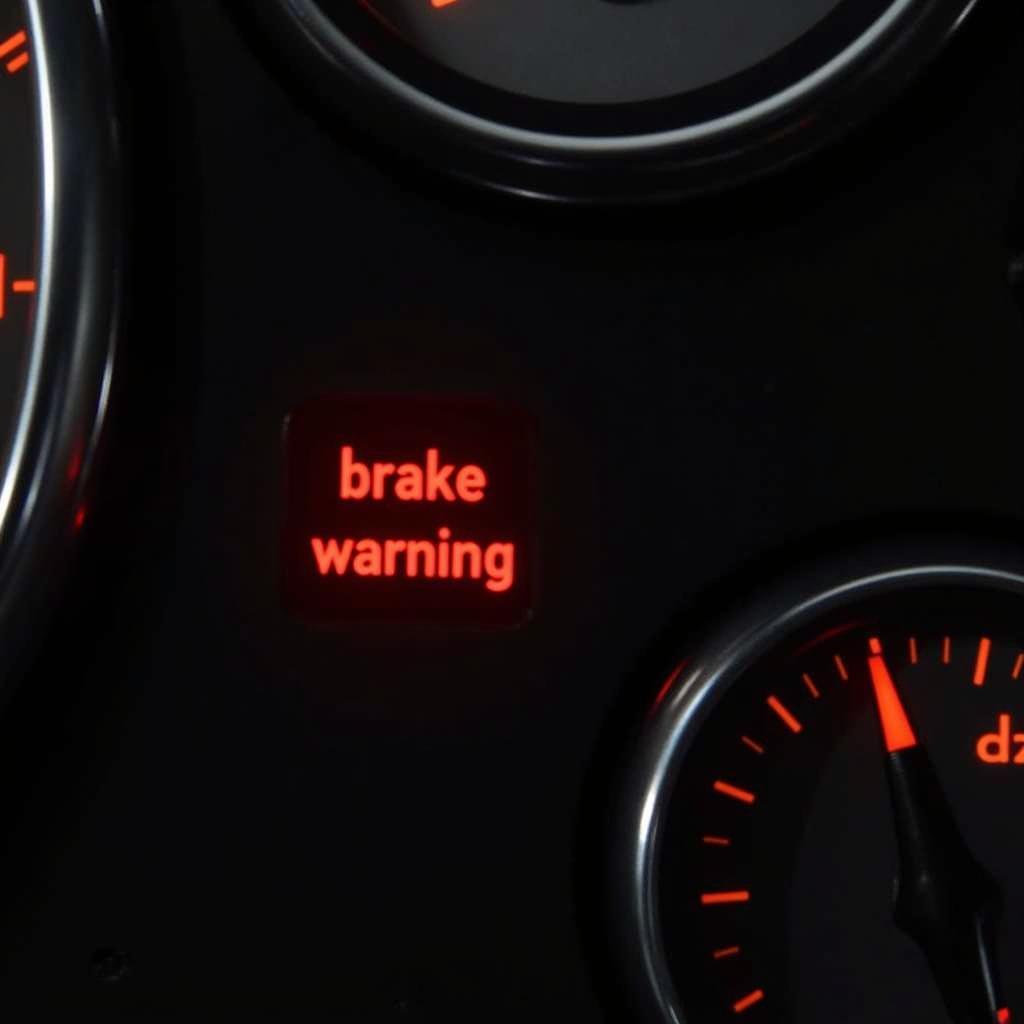The BMW collision warning system with brake activation is a vital safety feature designed to prevent or mitigate collisions. This system utilizes sensors to monitor the distance to vehicles ahead and can provide visual, audible, and haptic warnings to the driver if a potential collision is detected. If the driver fails to react, the system can automatically apply the brakes to help avoid or lessen the severity of an impact.
While this system is highly advanced, there are instances where you might encounter issues or false warnings. This article will delve into the common causes of these problems and offer guidance on how to address them.
Understanding Your BMW Collision Warning System
Before we jump into troubleshooting, it’s crucial to understand how your BMW’s collision warning system works. The system relies on a combination of sensors, primarily radar and sometimes cameras, strategically placed on the vehicle. These sensors constantly scan the road ahead, measuring the distance and closing speed to objects in your path.
When the system detects an imminent collision risk, it alerts the driver through a multi-stage warning process. This typically begins with a visual warning on the dashboard or Head-Up Display (HUD), often accompanied by an audible chime. If the driver doesn’t respond and the collision risk escalates, the system can provide a haptic warning, such as a brief, intense vibration of the steering wheel. Finally, if the system determines a collision is unavoidable without intervention, it can automatically apply the brakes.
Common Causes of BMW Collision Warning with Brake Activation Issues
Several factors can lead to issues with your BMW’s collision warning system, triggering false warnings or causing malfunctions.
1. Sensor Obstructions
The most frequent cause of false warnings is sensor obstruction. Dirt, debris, snow, ice, or even stickers on your BMW’s bumpers can block the sensors, preventing them from accurately assessing the surrounding environment.
“Even a thin layer of dirt can interfere with the radar signals,” says Jake Carter, a seasoned automotive electrical engineer with over 15 years of experience. “Regular cleaning of your BMW’s sensors is essential for optimal system performance.”
2. Environmental Factors
Extreme weather conditions such as heavy rain, fog, or snow can interfere with the sensors’ ability to operate correctly. Additionally, driving on roads with sharp curves or steep hills can sometimes confuse the system, leading to temporary malfunctions.
3. Software Glitches
Like any computer-based system, your BMW’s collision warning system can experience software glitches. These glitches might be due to minor bugs or outdated software versions.
4. Faulty Sensors or Wiring
While less common, faulty sensors or wiring issues can also lead to system malfunctions. Damage from minor accidents or wear and tear over time can impact the sensors or their connections.
Troubleshooting BMW Collision Warning System Issues
Experiencing issues with your BMW’s collision warning system can be alarming. Here’s a step-by-step guide to help you troubleshoot the problem:
- Check for Sensor Obstructions: Carefully inspect all sensors located on the front and rear bumpers of your BMW. Ensure they are clean and free of any dirt, debris, snow, or ice.
- Consider Environmental Factors: If you’re driving in extreme weather conditions, be aware that this could be temporarily affecting your system. Monitor the system’s behavior as conditions improve.
- Restart Your Vehicle: Much like a computer, restarting your BMW can sometimes resolve temporary software glitches. Turn off the engine, wait a few minutes, and then restart.
- Check for Software Updates: BMW periodically releases software updates that can improve system performance and address known bugs. Consult your owner’s manual or contact your BMW dealer to see if any updates are available for your vehicle.
- Consult a Qualified Technician: If the issue persists despite trying the above steps, it’s recommended to seek professional help. Contact a qualified BMW technician who can diagnose the problem using specialized diagnostic equipment and perform any necessary repairs.
bmw front collision warning with brake intervention
Maintaining Your BMW Collision Warning System
Regular maintenance can help prevent issues with your collision warning system. Here are some essential tips:
- Clean your BMW’s sensors regularly: Wipe the sensors gently with a soft, damp cloth. Avoid using harsh chemicals or abrasive materials.
- Schedule regular service appointments: During your scheduled service appointments, remind your BMW technician to inspect the collision warning system for any potential issues.
- Address warning lights promptly: If any warning lights related to your collision warning system illuminate on your dashboard, don’t ignore them. Have the system inspected by a qualified technician as soon as possible.
Conclusion
The BMW collision warning system with brake activation is a crucial safety feature that can significantly reduce the risk of accidents. By understanding how the system works, recognizing common issues, and performing regular maintenance, you can help ensure that this vital safety system is always functioning correctly, providing you with added peace of mind on the road.
Remember, if you’re experiencing persistent problems with your BMW’s collision warning system, it’s always best to consult a qualified technician for expert diagnosis and repair.


